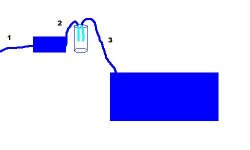I’m obv not a newbie but this is a newbie type of question… I’ve searched for a while now, but I can’t really figure out how Kalk Reactors work. I’m interested in some form of automated system, but as it’ll only be going on a 75 with just one or two SPS/Clams, I didn’t want to mess with a Ca Reactor if at all possible.
My basic understanding of a kalk reactor is that you just dump in a crap load of kalk powder, the water will constantly absorb as much as it can hold, and as new unsaturated freshwater comes through the system, it slowly dwindles down the kalk powder supply, then you just refill the kalk. Saying I have a gravity fed reservoir auto-top off system operating only float valves, how would a kalk reactor be plumbed inline with this? Could I just set it beside my reservoir and allow gravity to the tank pull the water out of my reservoir and through the kalk reactor? How do dosing pumps work into the mix with kalk reactors, and do I need one? (I don’t know much about these either, but that’s a different story.) It seems like a kalk reactor is a very basic piece of equipment that should be easy to understand, but I’m missing a link or two in the process I guess. Thanks :wink:
My basic understanding of a kalk reactor is that you just dump in a crap load of kalk powder, the water will constantly absorb as much as it can hold, and as new unsaturated freshwater comes through the system, it slowly dwindles down the kalk powder supply, then you just refill the kalk. Saying I have a gravity fed reservoir auto-top off system operating only float valves, how would a kalk reactor be plumbed inline with this? Could I just set it beside my reservoir and allow gravity to the tank pull the water out of my reservoir and through the kalk reactor? How do dosing pumps work into the mix with kalk reactors, and do I need one? (I don’t know much about these either, but that’s a different story.) It seems like a kalk reactor is a very basic piece of equipment that should be easy to understand, but I’m missing a link or two in the process I guess. Thanks :wink:






